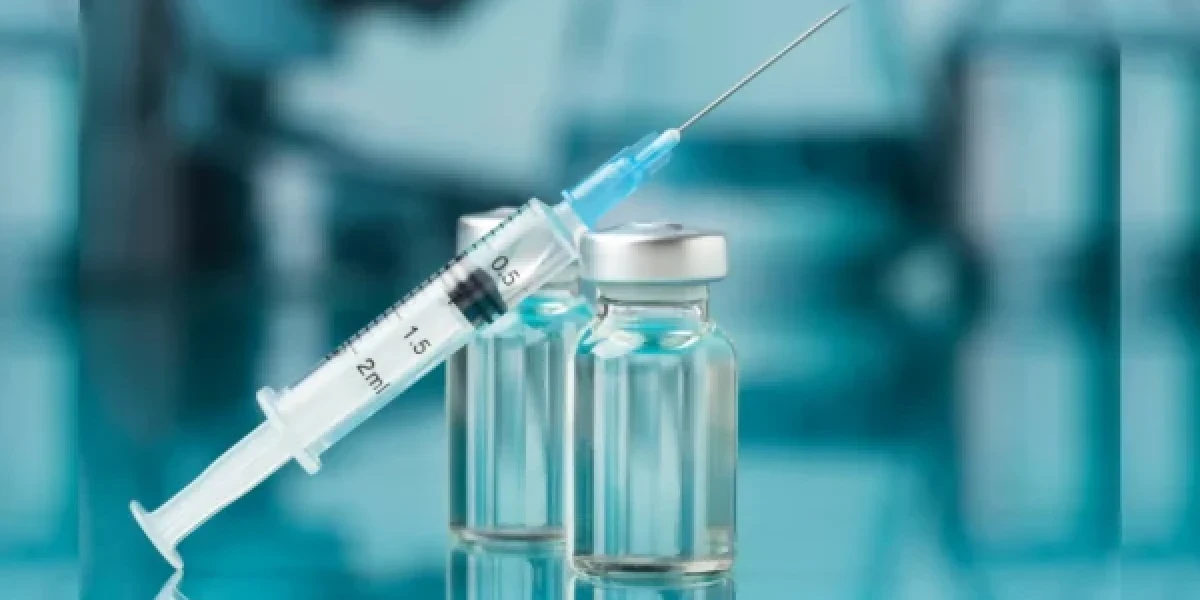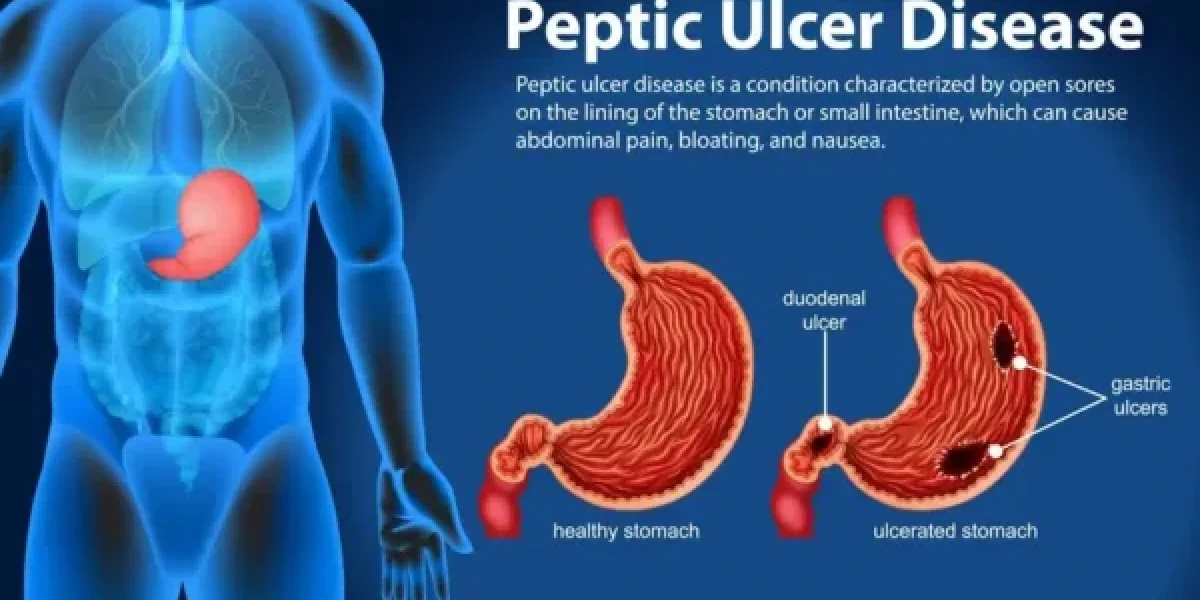Introduction
A vaccine has saved millions of lives worldwide, and it's one of the biggest advances in medical science. We're going to look at vaccines from infancy to adulthood in this comprehensive guide. They're essential for preventing infectious diseases. Hopefully, by the end of this article, you'll understand the importance of vaccines and the vaccination schedule for different ages.
I. Vaccination in Infancy (Birth to 2 Years)
In order to protect our kids' health and well-being from the earliest days, vaccines are essential. Infants get their first round of vaccinations, including Hepatitis B and Vitamin K, when they're born, so they start off on the right foot.
A. Birth Vaccinations
- Hepatitis B
- The Hepatitis B virus has serious consequences if contracted, especially in babies. Infants need this vaccine shortly after birth to prevent chronic liver disease. It's an effective and safe vaccination that helps protect newborns from chronic liver disease. It's highly effective and safe, so parents can relax knowing their babies' safe.
- Vitamin K
- Vitamin K may not be a vaccine in the traditional sense, but its administration right after birth is equally important. Newborns are born with low levels of Vitamin K, a nutrient essential for blood clotting. Administering Vitamin K helps prevent a rare but serious condition called Vitamin K deficiency bleeding, which can lead to dangerous bleeding in a baby's brain or other organs. This simple injection is a key step in ensuring a healthy start for infants.
Early on in a child's life is a crucial time for building immunity against various diseases. Several vaccines are recommended during this period to protect children from preventable illnesses.
- DTaP (Diphtheria, Tetanus, and Pertussis)
- This vaccine protects against three serious diseases: diphtheria, tetanus, and pertussis (whooping cough). Diphtheria can cause severe respiratory problems, while tetanus can cause stiffness and spasms in the muscles. In particular, infants are at risk of getting pertussis, a highly contagious disease that can be life-threatening. With DTaP vaccination, children can grow and develop free from those illnesses.
- Hib (Haemophilus influenzae type b)
- Young children are at risk of severe diseases like meningitis and pneumonia due to haemophilus influenzae type b, or Hib. With the Hib vaccine, infants and kids get immunity against this bacterium, saving them from these potentially life-threatening infections. In recent years, we've seen a big decline in these diseases because Hib vaccinations are now on the routine schedule.
- IPV (Inactivated Polio Vaccine)
- Polio was once a global health crisis, causing paralysis and death in countless children. Thanks to the inactivated polio vaccine (IPV), this disease has been nearly eradicated in many parts of the world. IPV is given as a series of shots to ensure robust immunity against all polio strains. Protecting children from polio is not only vital for their well-being but also for global efforts to achieve a polio-free world.
- PCV (Pneumococcal Conjugate Vaccine)
- Pneumococcal disease can cause various infections, including pneumonia, meningitis, and ear infections. The PCV vaccine targets these bacteria, providing protection against a range of illnesses. By immunizing children against pneumococcal disease, we reduce the burden of these infections and their associated complications.
- RV (Rotavirus)
- Rotavirus is a common cause of severe diarrhea and dehydration in infants and young children. The RV vaccine has been a game-changer in preventing rotavirus-related hospitalizations and deaths. By receiving this vaccine, children can avoid the discomfort and potential dangers of rotavirus infections.
- MMR (Measles, Mumps, and Rubella)
- The MMR vaccine is typically administered around the age of one and offers immunity against measles, mumps, and rubella. These highly contagious diseases can lead to serious complications, including encephalitis and birth defects if contracted during pregnancy. The MMR vaccine has been instrumental in reducing the prevalence of these diseases and is a crucial component of childhood immunization.
C. Importance of Vaccination Schedule
The importance of adhering to the recommended vaccination schedule cannot be overstated. Each vaccine is strategically scheduled to maximize a child's protection while minimizing potential risks. The schedule ensures that infants and young children receive the right vaccines at the right time, allowing their immune systems to develop a robust response to these diseases.
Delayed or missed vaccinations can leave children vulnerable to vaccine-preventable diseases. Moreover, maintaining a regular vaccination schedule helps contribute to the broader goal of herd immunity, protecting not only individual children but also those who cannot receive vaccines due to medical conditions.
The early years of a child's life are a critical time for vaccination. From birth vaccinations like Hepatitis B and Vitamin K to the various vaccines administered in early childhood, each plays a vital role in safeguarding our children's health and well-being. Adhering to the recommended vaccination schedule is not only essential for individual protection but also for the greater good of public health. It's a responsibility we all share to ensure a healthier and safer future for our children.
II. Vaccination in Childhood (3 to 12 Years)
Childhood is a crucial phase in a person's life, marked by rapid growth and development. It's also the time when children typically receive several important vaccinations to protect them from various diseases. In this stage, there are school-age vaccinations, catch-up vaccinations for missed shots, and a focus on vaccine-preventable diseases.
A. School-Age Vaccinations
- Varicella (Chickenpox) The Varicella vaccination helps protect kids against chickenpox, so it's one of the most common vaccines for school-age kids. Even though chickenpox seems like a mild illness, it can get worse, especially in older kids and adults. A child doesn't just avoid the discomfort of the disease by getting the Varicella vaccine; however, he or she also doesn't spread it.
- HPV (Human Papillomavirus) The Human Papillomavirus (HPV) vaccine is essential for preteens. HPV is a sexually transmitted disease that can cause lots of cancer, including cervical, anal, and throat cancers. This vaccine can provide robust protection before children get sexually active, which is crucial to preventing HPV-related diseases. It's usually given around 11 or 12.
- Tdap (Tetanus, Diphtheria, and Pertussis) TDAP is another school-age vaccine. It protects kids against three potentially life-threatening diseases: tetanus, diphtheria, and pertussis (whooping cough). The disease is highly contagious and can have serious consequences. When kids get a booster shot at this age, they'll keep the protection they got earlier
B. Catch-up Vaccinations
- Addressing Missed VaccinesIt A lot of kids miss vaccines due to illness, travel, or a delay in catching up. A catch-up vaccination bridges that gap, so kids get the recommended vaccines they might have missed. To make sure a catch-up schedule is based on a child's age and vaccination history, talk to your doctor. Keep the child's immunity up and protect them from vaccine-preventable diseases by catching up on missed vaccines.
C. Vaccine-Preventable Diseases
- Common Diseases and Their Vaccines
- Understanding vaccine-preventable diseases is fundamental for parents and caregivers. Some of the common diseases that childhood vaccines protect against include:
- Measles, Mumps, and Rubella (MMR): The MMR vaccine guards against these highly contagious diseases that can lead to severe complications, including encephalitis and deafness.
-
- Polio (IPV): Inactivated Polio Vaccine is essential in eradicating polio, a disease that can cause paralysis and death.
-
- Hepatitis B: This vaccine prevents a viral infection that affects the liver and can be dangerous long-term.
-
- Meningitis (MenACWY): Meningococcal vaccines are vital to safeguard children from a potentially fatal bacterial infection that can cause meningitis and blood infections.
-
- Influenza: Influenza vaccinations reduce the risk of serious complications and hospitalizations caused by the flu.
-
- Pneumococcal Disease (PCV): Prevents pneumonia, meningitis, and ear infections with pneumococcal vaccines.
-
- Rotavirus (RV): This vaccine prevents a common cause of severe diarrhea and dehydration in young children.
-
- Hib (Haemophilus influenzae type b): It's essential for preventing diseases like pneumonia and meningitis.
-
- Chickenpox (Varicella): Protects against the highly contagious varicella-zoster virus.
-
- Human Papillomavirus (HPV): Reduces the risk of HPV-related cancers.
-
- Tetanus, Diphtheria, and Pertussis (Tdap): This booster shot maintains protection against these dangerous diseases.
- In addition to protecting individual children, vaccines also help build community immunity, reducing the prevalence of these diseases in general. In particular, those who can't get vaccines for medical reasons, as well as the very young and elderly, are more susceptible to severe outcomes.
Catch-up vaccinations cover any missed shots, so your child is protected against a range of diseases. School-age vaccinations are a crucial part of a child's health. In order to keep kids and the community healthy, it's important to understand the common vaccine-preventable diseases and why vaccinations matter. Parents and caregivers should work closely with healthcare providers to make sure their kids get all the recommended shots and are up-to-date on their vaccinations.
III. Adolescence (13 to 18 Years)
In adolescence, a person grows, becomes independent, and takes on new responsibilities. Maintaining good health becomes a priority during this time. Adolescents need vaccinations to keep them healthy and make the transition to adulthood easy. Here we discuss the importance of vaccinations for adolescents, with a special focus on meningococcal, influenza, and COVID-19 vaccinations, as well as the safety and side effects of vaccines.
A. Meningococcal Vaccination: Meningococcal disease is a serious bacterial infection that can lead to meningitis and septicemia, both of which can be life-threatening. Adolescents, especially those entering college or living in close quarters, are at a higher risk of contracting the disease due to their increased social interactions. Meningococcal vaccines, such as MenACWY and MenB, are highly effective in preventing this infection. These vaccines not only protect the individuals receiving them but also contribute to herd immunity, reducing the overall prevalence of the disease in the community.
B. Annual Influenza Vaccination: You need to get vaccinated against influenza every year: Influenza is a contagious respiratory illness that affects everyone. Like other age groups, adolescents can get the flu's severe symptoms, which can keep them out of school, at activities, and even hospitalized. Adolescents need to get their influenza vaccine every year so they don't get infected and the virus doesn't spread. Teenagers with underlying health conditions are particularly vulnerable to flu complications.
C. COVID-19 Vaccination: The COVID-19 pandemic has made vaccination a big deal. It is recommended that adolescents aged 12 and older get vaccinated against COVID-19. Adolescents are typically less affected by the virus; they play a crucial role in spreading it within the community. Pfizer and Moderna's vaccines have been tested for safety and effectiveness. Adolescents benefit from vaccinations, not only in protecting themselves but also in contributing to herd immunity.
D. Vaccine Safety and Side Effects: Adolescents and their parents are worried about vaccines. Fortunately, vaccines are tested before they're approved. Vaccine safety is always monitored, and any adverse effects are investigated. There are a lot of short-lived and mild side effects to vaccines, like soreness at the injection site, mild fever, or fatigue. Serious side effects are rare. In addition to that, vaccines protect against life-threatening diseases. Adolescents and parents should talk to a healthcare professional about vaccine safety if they have any concerns.
It's not just about protecting adolescents from vaccine-preventable diseases, vaccinations also make a huge difference to the community. Our goal is to get adolescents vaccinated, so herd immunity can be created, which protects those who can't get vaccines or might get complications. Adolescents should prioritize vaccinations as they get older.
You should take care of yourself during adolescence because it's a time of growth and change. In order to prevent serious diseases in adolescents and stop them from spreading, vaccinations for meningococcal, influenza, and COVID-19 are crucial. Vaccine safety and side effects should be discussed openly with healthcare providers by adolescents and their parents. They can make better decisions so they can protect their health and contribute to the well-being of their community.
IV. Vaccination in Adulthood
Vaccinations are not just for children. As we age, our immunity against certain diseases may wane, leaving us susceptible to potentially severe health risks. In adulthood, a well-planned vaccination schedule remains crucial in safeguarding our health. This article will delve into some of the key vaccines recommended for adults and highlight the importance of booster shots and catch-up vaccinations.
A. Tetanus and Diphtheria Booster
Tetanus and diphtheria are bacterial infections that can have serious consequences, and adults are not immune to them. To maintain protection against these diseases, adults should receive a booster shot every ten years. The Td (tetanus and diphtheria) or Tdap (tetanus, diphtheria, and pertussis) vaccine is recommended to ensure that you remain immune to these potentially deadly illnesses.
Tetanus, often referred to as "lockjaw," is caused by the Clostridium tetani bacteria and is found in soil and dust. It can enter the body through wounds, and its neurotoxin can lead to painful muscle stiffness and spasms. Diphtheria, on the other hand, is a bacterial infection that primarily affects the throat and respiratory system. It can lead to breathing difficulties and heart complications.
Booster shots for tetanus and diphtheria are vital because over time, the immunity wanes, and these bacteria can still pose a threat to adults. By getting the Td or Tdap booster, you not only protect yourself but also contribute to community immunity, making it less likely for these diseases to spread.
B. Shingles (Herpes Zoster)
Shingles, also known as herpes zoster, is a painful and often debilitating disease that can affect adults, particularly as they age. It is caused by the reactivation of the varicella-zoster virus, the same virus that causes chickenpox. After recovering from chickenpox, the virus remains dormant in nerve cells, and in some individuals, it can reactivate, causing shingles.
The symptoms of shingles are usually a rash with blisters. They can also cause long-term complications like postherpetic neuralgia, which is persistent nerve pain. Shingles are debilitating conditions, and they affect one's quality of life big time.
For adults aged 50 and older, there is a vaccine available to prevent shingles. The shingles vaccine, often called Zostavax or Shingrix, has been shown to reduce shingles and its complications by over 90%. Get vaccinated, and you'll be protected against shingles; you'll also reduce your chances of spreading it to others, especially pregnant women and people with weakened immune systems.
C. Pneumococcal Vaccination
Several infections, including pneumonia and meningitis, can be caused by pneumococcal disease caused by Streptococcus pneumoniae. It's more likely for adults over 65, people with certain medical conditions, and people with weakened immune systems to get pneumococcal disease.
Pneumococcal vaccines are essential for preventing these serious illnesses. There are two main types of pneumococcal vaccines: PPSV23 (Pneumovax 23) and PCV13 (Prevnar 13). The choice of which vaccine to receive depends on your age, health status, and prior vaccinations. Your healthcare provider can help you determine which is best for you.
Pneumococcal vaccines not only protect individuals but also contribute to community immunity, reducing the overall burden of these infections. Discuss with your healthcare provider when and which pneumococcal vaccine is recommended for you based on your risk factors and age
D. Adult Boosters and Catch-up Vaccination
As well as the vaccines mentioned above, adults should consider catch-up vaccinations for missed or incomplete shots from earlier in their lives. If they haven't been adequately protected in the past, this can include measles, mumps, rubellas, hepatitis B, and varicella (chickenpox). You'll be protected against preventable diseases if you catch up on these vaccines.
You may need booster shots for vaccines like hepatitis A, hepatitis B, and the flu. Boosters can be needed depending on your age, lifestyle, and potential exposure. If you're not sure which boosters or catch-up vaccinations are right for you, talk to your healthcare provider.
It's just as important to get vaccinations in adulthood as it is in childhood. It protects you against preventable diseases, reduces the spread of infection, and keeps your community healthy. You'll stay healthy and protected for your whole life if you talk to your healthcare provider about creating a customized vaccination plan tailored to your particular needs and age.
V. Special Considerations
A. Vaccination during Pregnancy
Pregnancy is a time of great anticipation, and the health of both the mother and the baby is of utmost importance. One crucial aspect of prenatal care is vaccination during pregnancy. While some vaccines are contraindicated during pregnancy, others can be a lifeline for both mother and child.
Influenza can cause severe complications during pregnancy, including preterm birth and low birth weight. Preventing the flu during pregnancy primarily involves two vaccines: the flu vaccine and the Tdap (Tetanus, Diphtheria, Pertussis) vaccine. As a result, it is recommended for pregnant women, no matter where they are in their trimester, to get the flu vaccine. It not only protects the mother; also the baby.
When you get a Tdap vaccine during pregnancy, you're protecting your baby from pertussis. Pertussis can be deadly to a newborn. Mothers can pass on protective antibodies to their babies by getting a Tdap vaccination during pregnancy, so they're not vulnerable until they're two months old.
B. Travel Vaccines
While traveling can be exciting and enriching, it can also pose health risks, like infectious diseases you don't normally get in your home country. Travel vaccines can help with this. It's important to get all the vaccinations before embarking on an international journey so you don't get sick and make sure the community you're visiting doesn't have the disease.
Travel vaccinations depend on your destination, how long you'll be there, and how healthy you are. Depending on where you're going, you may need or recommend vaccines for hepatitis A, typhoid, and yellow fever. Hepatitis A, for instance, is a food and waterborne disease that's common everywhere. You can prevent a distressing and potentially life-threatening illness while traveling by getting vaccinated.
Also, some countries require proof of vaccinations before you can get in. Yellow fever is a good example of this, with a vaccination certificate usually required for entry. Travel vaccines help stop diseases from spreading across borders, so not only do they protect you, but they help global health as well.
C. Vaccine Myths and Facts
In recent years, vaccines have been a topic of much debate, and misinformation has led to widespread vaccine hesitancy. It's crucial to separate vaccine myths from the scientific facts to make informed decisions about immunization.
Myth: Vaccines cause autism. Fact: A number of studies have disproved the idea that vaccines cause autism. The original paper that suggested this link has been discredited and retracted, and extensive research hasn't found this link.
Myth: Natural immunity is better than vaccine-induced immunity. Fact: While recovering from a disease may provide immunity, it can also lead to severe complications or death. Vaccines are a safer way to build immunity without the risks associated with the actual diseases.
Myth: Vaccines contain harmful toxins. Fact: There are traces of formaldehyde and aluminum in vaccines; these are so small that they don't bother you. MYTH: VACCINES CONTAIN HARMFUL TOXINS. This stuff helps preserve the vaccine and make it more effective.
Myth: Vaccine-preventable diseases are no longer a threat. Fact: Vaccine-preventable diseases still exist and can resurge if vaccination rates decline. Diseases like measles and pertussis have made a comeback in regions with low vaccine coverage.
Myth: Vaccines can overwhelm a child's immune system. Fact: A child's immune system is capable of handling the antigens in vaccines, which are far fewer than the antigens encountered in everyday life. Vaccines are designed to stimulate the immune system without causing disease.
Vaccination during pregnancy, travel vaccines, and understanding the facts about vaccines are all important aspects of public health and individual well-being. Vaccination during pregnancy can protect both the mother and her baby, travel vaccines are essential for safe international travel, and debunking vaccine myths is crucial to combat vaccine hesitancy. By addressing these special considerations, we can continue to promote health and prevent the spread of preventable diseases in our communities and around the world.
VI. Importance of Herd Immunity
A. Protecting the Vulnerable
Herd immunity, also known as community immunity, is a term that has gained significant attention in recent years, thanks in no small part to the ongoing battle against the COVID-19 pandemic. It’s a concept that underscores the importance of vaccination not only for individual protection but for safeguarding those who are most vulnerable in our society. Protecting the vulnerable is one of the central pillars of herd immunity.
Vaccines have proven to be one of the most effective public health tools for protecting vulnerable populations, like infants, the elderly, and those who have weak immune systems. When a large proportion of the population are immunized against a particular disease, it creates a protective barrier around those who can't get vaccines themselves. For people with allergies or specific medical conditions that prevent them from getting vaccinated, this is crucial.
As infants' immune systems are still developing, they are especially at risk of infectious diseases. Most vaccines can't be administered until they're a certain age, so they're more susceptible to vaccine-preventable diseases. As a safety net, herd immunity keeps these babies from getting sick within the community. Adults and older kids who are vaccinated create a cocoon of protection around these babies.
It's especially dangerous for elderly people living in nursing homes. Vaccines don't work as well for them, so they are more susceptible. As a result, shed immunity shields them because pathogens don't circulate as much in the community anymore. With herd immunity, even a vaccine that doesn't provide complete protection can still reduce the risk of severe illness.
If your immune system is weak, like a cancer patient undergoing chemotherapy or someone with an autoimmune disorder, you're less likely to get sick. A vaccination might not give them enough protection; if everybody around them is immunized, they're much less likely to get sick.
The COVID-19 pandemic has made it extremely important to protect those who are most at risk. It's not just about personal responsibility; it's about our collective duty to make sure they're safe. In order to protect the elderly, people with underlying health conditions, and those who aren't vaccinated for medical reasons, we need to achieve herd immunity through widespread vaccination.
B. Community Health Benefits
Shed immunity helps a lot more than just keep the most vulnerable people safe. Shed immunity keeps the whole community healthy too. A large portion of the population is immune to a certain disease, so outbreaks become less likely.
The reduction in disease transmission has a lot of positive impacts. First and foremost, it helps prevent epidemics, and diseases that were once widespread and devastating can now be controlled or even eradicated. Herd immunity played a huge role in the global eradication of smallpox in 1980.
Moreover, community health benefits extend to healthcare systems and resources. If the prevalence of a disease is low due to herd immunity, healthcare facilities and staff don't have to deal with it as much. Healthcare providers have fewer workloads, fewer hospitalizations, and fewer medical supplies to buy. In addition to helping those in need, it also mitigates healthcare crises, especially during flu season and when there is a new disease.
The idea of herd immunity encourages a sense of solidarity and social responsibility. It makes us realize that our actions matter. Vaccinating helps people protect those who can't protect themselves as well as contribute to the well-being of their communities. A more harmonious society comes from a sense of collective responsibility.
It's not just a theoretical notion, but a tangible and vital part of public health. It protects the most vulnerable members of our community, like infants, the elderly, and those with weakened immune systems. In addition to preventing epidemics and relieving the burden on healthcare systems, it has profound community health benefits. The work we do collectively to achieve and maintain herd immunity reflects our dedication to individual and societal well-being.
VII. Future of Vaccines
Vaccines have been a cornerstone of public health for centuries, preventing countless diseases and saving lives. As we look to the future, ongoing research and emerging vaccination technologies promise to enhance the effectiveness, accessibility, and safety of vaccines. We'll look at all the new vaccination developments in this article.
A. Ongoing Research and Development
In vaccine research, there's always something new to come, and scientists and healthcare professionals work on improving the ones we already have. One of the key areas for research is developing more effective vaccines. By using modern technology, we can design vaccines that are more targeted and last longer. The COVID-19 vaccine, for example, was a breakthrough. Research is underway to apply this technology to a wider range of infections. Vaccines work by introducing a small piece of genetic material from the pathogen, which triggers a robust immune response.
In addition, research is underway to make vaccines cheaper and easier to distribute. Traditional vaccines often need refrigeration, which isn't always possible in resource-limited environments. Scientists are working on making vaccines that stay stable at high temperatures, so they can be stored and transported easily. With this innovation, healthcare can now reach remote areas.
A lot of research is aimed at addressing vaccine hesitancy and misinformation. For high vaccination rates and herd immunity, it's critical to develop educational programs and strategies that build trust in vaccines. Researchers are studying psychological and social factors that influence vaccine decision-making and designing interventions to combat misinformation.
B. Emerging Vaccination Technologies
In the future, vaccinations look promising because of new technologies that are changing the way vaccines are designed, delivered, and administered. The use of nanotechnology in vaccine design is one of them. A nanoparticle can be engineered to mimic a virus or bacteria, stimulating a strong immune response. With these nanoparticles, you can make vaccines that carry specific antigens. Researchers are testing nanoparticles as vaccines for malaria, HIV, and influenza.
A new development in vaccine research and development is using artificial intelligence (AI). AI can analyze a lot of data to find potential vaccine candidates and predict their efficacy. By using this technology, researchers can discover new vaccines faster and focus on the most promising ones, so it's possible to get a new vaccine to market much faster. In addition to vaccine safety, AI is used to analyze adverse event reports and identify potential patterns.
Furthermore, advancements in vaccine delivery technologies are revolutionizing how vaccines are administered. Needle-free options, such as microneedle patches, are being developed. These patches, which are painless and easy to use, can be applied at home, reducing the need for healthcare provider visits and improving vaccine coverage. Additionally, innovations in oral vaccines and inhalable vaccines are expanding options for vaccine delivery, particularly in populations where injections may be less convenient or acceptable.
Vaccine delivery technologies are also becoming more patient-centric. Digital tools and apps are being developed to track vaccination schedules, provide reminders, and offer personalized information about vaccines. These tools empower individuals to take control of their health and ensure they receive the necessary vaccines at the right time.
As vaccine technology advances, the landscape of vaccine development, distribution, and administration is becoming more innovative and promising. Scientists are always working on making vaccines more accessible, effective, and safe. In the future, vaccines could prevent even more diseases and improve global health thanks to technology like mRNA, nanotechnology, artificial intelligence, and innovative delivery methods. Let's support and invest in these advances so vaccines remain a cornerstone of disease prevention and a force for good in the world.
VIII. Conclusion
In conclusion, vaccines play a pivotal role in safeguarding public health from birth to adulthood. Understanding the vaccination schedule, staying up-to-date with recommended vaccines, and dispelling myths are all essential for maintaining individual and community health. Vaccination is a collective responsibility that offers protection to the most vulnerable and contributes to the overall well-being of society. By making informed decisions about vaccinations, we can collectively work towards a healthier future for all.
By following the guidance in this comprehensive guide, you can ensure that you and your loved ones are protected at every stage of life, making a significant contribution to the well-being of society as a whole.
Frequently Asked Questions (FAQs)
- What are vaccines, and why are they important from birth to adulthood?
- Vaccines are biological preparations that help the immune system recognize and fight specific diseases. They are crucial from birth to adulthood because they prevent the spread of infectious diseases, protect individuals from serious illnesses, and contribute to herd immunity.
- What vaccines are recommended for newborns right after birth?
- Newborns typically receive the Hepatitis B vaccine shortly after birth to protect them from this viral infection, which can lead to severe liver disease.
- What is the vaccination schedule for infants and young children?
- A vaccination schedule for infants and young kids includes shots for diseases like Diphtheria, Tetanus, Pertussis (DTaP), Polio (IPV), Measles, Mumps, Rubella (MMR), and more.
- When do children need booster shots, and why are they important?
- Booster shots are needed to reinforce the immunity acquired from initial vaccinations. They are often given during adolescence to maintain protection against diseases like Tetanus, Diphtheria, and Pertussis (Tdap).
- Are there vaccines specifically for adolescents?
- Vaccinations like the Meningococcal and Human Papillomavirus (HPV) vaccines can protect adolescents from serious diseases.
- What vaccines do adults need to stay up-to-date on as they grow older?
- As we age, adults may need more vaccines like the influenza vaccine, the shingles shot, and the pneumococcal shot to stay healthy.
- Is it safe to receive multiple vaccines at once?
- The CDC and WHO recommend combination vaccines, which reduce the number of shots a person needs and have been extensively studied for safety.
- Do vaccines have side effects, and how common are they?
- Vaccines can have mild side effects, like soreness at the injection site or a low-grade fever; however, serious side effects are rare, and the benefits outweigh the risks.
- What are some common myths and misconceptions about vaccines?
- There are a lot of myths about vaccines, such as that they cause autism, contain harmful chemicals, or fail to protect. Investing in credible sources and scientific evidence can help you make an informed decision.
- How do vaccines contribute to herd immunity, and why is it important?
- Herd immunity is when a big percentage of a population is immune to a disease, making it less likely to spread. Vaccines play a key role in achieving herd immunity, protecting people who can't get vaccinated.
Important Notice:
The information provided on “health life ai” is intended for informational purposes only. While we have made efforts to ensure the accuracy and authenticity of the information presented, we cannot guarantee its absolute correctness or completeness. Before applying any of the strategies or tips, please consult a professional medical adviser.













